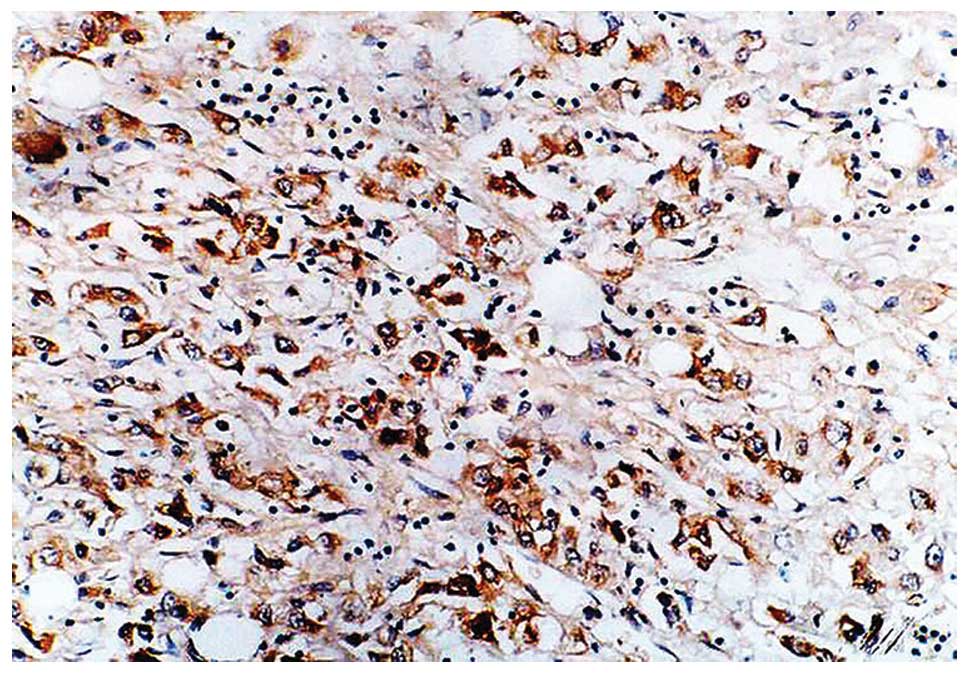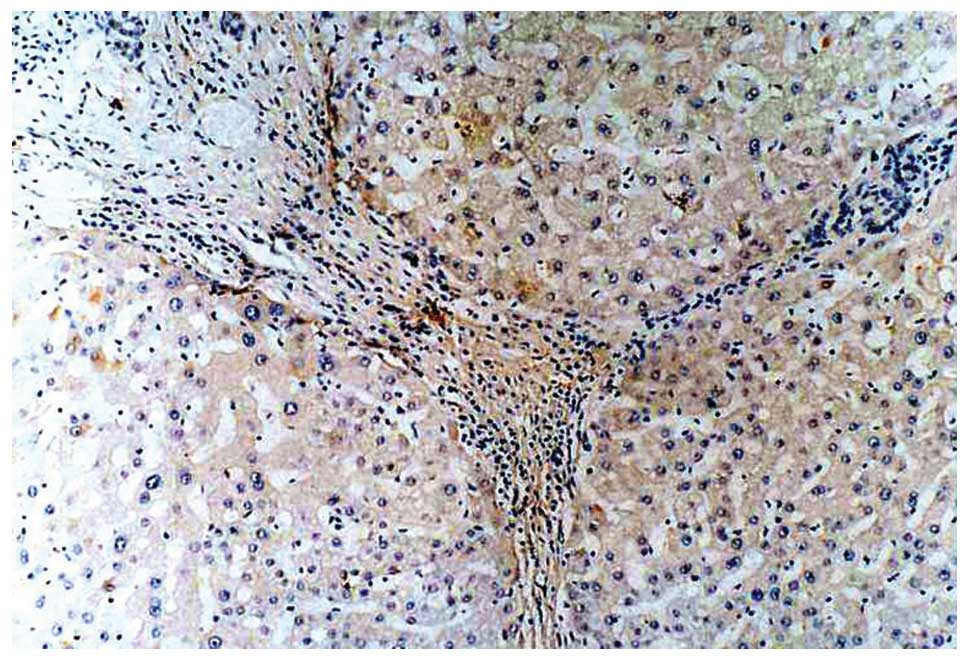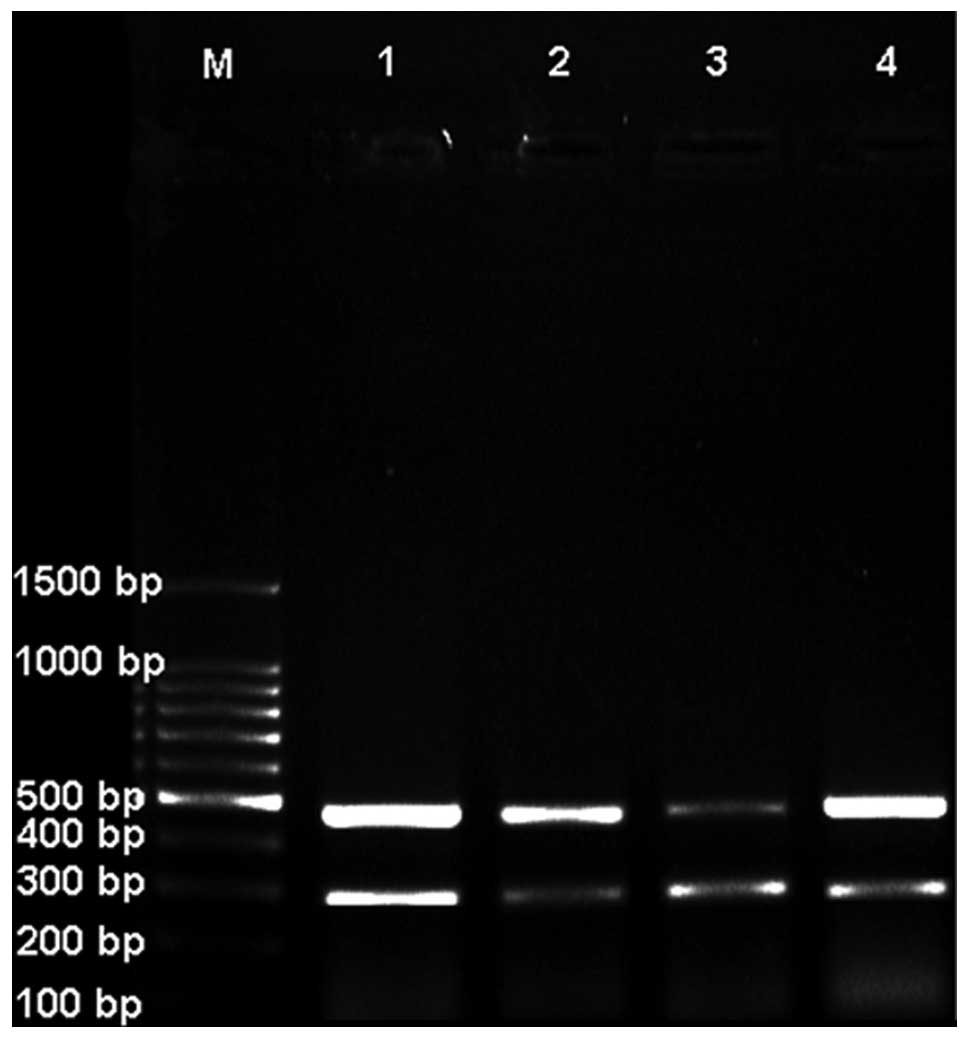|
1
|
Iliopoulos D, Satra M, Drakaki A,
Poultsides GA and Tsezou A: Epigenetic regulation of hTERT promoter
in hepatocellular carcinomas. Int J Oncol. 34:391–399.
2009.PubMed/NCBI
|
|
2
|
Vente MA, Wondergem M, van der Tweel I,
van den Bosch MA, Zonnenberg BA, Lam MG, van Het Schip Ad and
Nijsen JF: Yttrium-90 microsphere radioembolization for the
treatment of liver malignancies: A structured meta-analysis. Eur
Radiol. 19:951–959. 2009. View Article : Google Scholar : PubMed/NCBI
|
|
3
|
Wong PY, Xia V, Imagawa DK, Hoefs J and Hu
KQ: Clinical presentation of hepatocellular carcinoma (HCC) in
Asian-Americans versus non-Asian-Americans. J Immigr Minor Health.
13:842–848. 2011. View Article : Google Scholar : PubMed/NCBI
|
|
4
|
El-Serag HB: Hepatocellular carcinoma. N
Engl J Med. 365:1118–1127. 2011. View Article : Google Scholar : PubMed/NCBI
|
|
5
|
Chen CJ, Yang HI, Su J, Jen CL, You SL,
Huang GT and Iloeje UH: REVEAL-HBV Study Group: Risk of
hepatocellular carcinoma across a biological gradient of serum
hepatitis B virus DNA level. JAMA. 295:65–73. 2006. View Article : Google Scholar : PubMed/NCBI
|
|
6
|
Huo LF, Tang JW, Huang JJ, Huang PT, Huang
CF, Kung HF and Lin MC: Cancer immunotherapy targeting the
telomerase reverse transcriptase. Cell Mol Immunol. 3:1–11.
2006.PubMed/NCBI
|
|
7
|
Mizukoshi E, Nakamoto Y, Marukawa Y, Arai
K, Yamashita T, Tsuji H, Kuzushima K, Takiguchi M and Kaneko S:
Cytotoxic T cell responses to human telomerase reverse
transcriptase in patients with hepatocellular carcinoma.
Hepatology. 43:1284–1294. 2006. View Article : Google Scholar : PubMed/NCBI
|
|
8
|
Wu KJ, Grandori C, Amacker M, Simon-Vermot
N, Polack A, Lingner J and Dalla-Favera R: Direct activation of
TERT transcription by c-MYC. Nat Genet. 21:220–224. 1999.
View Article : Google Scholar : PubMed/NCBI
|
|
9
|
Saini N, Srinivasan R, Chawla Y, Sharma S,
Chakraborti A and Rajwanshi A: Telomerase activity, telomere length
and human telomerase reverse transcriptase expression in
hepatocellular carcinoma is independent of hepatitis virus status.
Liver Int. 29:1162–1170. 2009. View Article : Google Scholar : PubMed/NCBI
|
|
10
|
Li JH, Liu Y, Wang HF, et al: Construction
of hTERT promoter-driven TRAIL expression vector and its inhibitory
effects on hepatoma cell proliferation. Journal of Jilin University
(medicine edition). 36:825–831. 2010.(In Chinese).
|
|
11
|
Yang YJ, Chen H, Huang P, Li CH, Dong ZH
and Hou YL: Quantification of plasma hTERT DNA in hepatocellular
carcinoma patients by quantitative fluorescent polymerase chain
reaction. Clin Invest Med. 34:E2382011.PubMed/NCBI
|
|
12
|
Qian Y, Yang L and Cao S: Telomeres and
telomerase in T cells of tumor immunity. Cell Immunol. 289:63–69.
2014. View Article : Google Scholar : PubMed/NCBI
|
|
13
|
Tabori U, Ma J, Carter M, Zielenska M,
Rutka J, Bouffet E, Malkin D and Hawkins C: Human telomere reverse
transcriptase expression predicts progression and survival in
pediatric intracranial ependymoma. J Clin Oncol. 24:1522–1528.
2006. View Article : Google Scholar : PubMed/NCBI
|
|
14
|
Edmondson HA and Steiner PE: Primary
carcinoma of the liver: A study of 100 cases among 48,900
necropsies. Cancer. 7:462–503. 1954. View Article : Google Scholar : PubMed/NCBI
|
|
15
|
Takahashi S, Kitamoto M, Takaishi H,
Aikata H, Kawakami Y, Nakanishi T, Shimamoto F, Tahara E, Tahara H,
Ide T, et al: Expression of telomerase component genes in
hepatocellular carcinomas. Eur J Cancer. 36:496–502. 2000.
View Article : Google Scholar : PubMed/NCBI
|
|
16
|
Zhang PH, Zou L and Tu ZG: RNAi-hTERT
inhibition hepatocellular carcinoma cell proliferation via
decreasing telomerase activity. J Surg Res. 131:143–149. 2006.
View Article : Google Scholar : PubMed/NCBI
|
|
17
|
Miura N, Osaki Y, Nagashima M, Kohno M,
Yorozu K, Shomori K, Kanbe T, Oyama K, Kishimoto Y, Maruyama S, et
al: A novel biomarker TERTmRNA is applicable for early detection of
hepatoma. BMC Gastroenterol. 10:462010. View Article : Google Scholar : PubMed/NCBI
|
|
18
|
Lanson NA Jr, Friedlander PL,
Schwarzenberger P, Kolls JK and Wang G: Replication of an
adenoviral vector controlled by the human telomerase reverse
transcriptase promoter causes tumor-selective tumor lysis. Cancer
Res. 63:7939–7941. 2003.
|
|
19
|
Toshikuni N, Nouso K, Higashi T,
Nakatsukasa H, Onishi T, Kaneyoshi T, Kobayashi Y, Kariyama K,
Yamamoto K, Tsuji T, et al: Expression of telomerase associated
protein 1 and telomerase transcriptase in hepatocellular carcinoma.
Br J Cancer. 82:833–837. 2000. View Article : Google Scholar : PubMed/NCBI
|

















